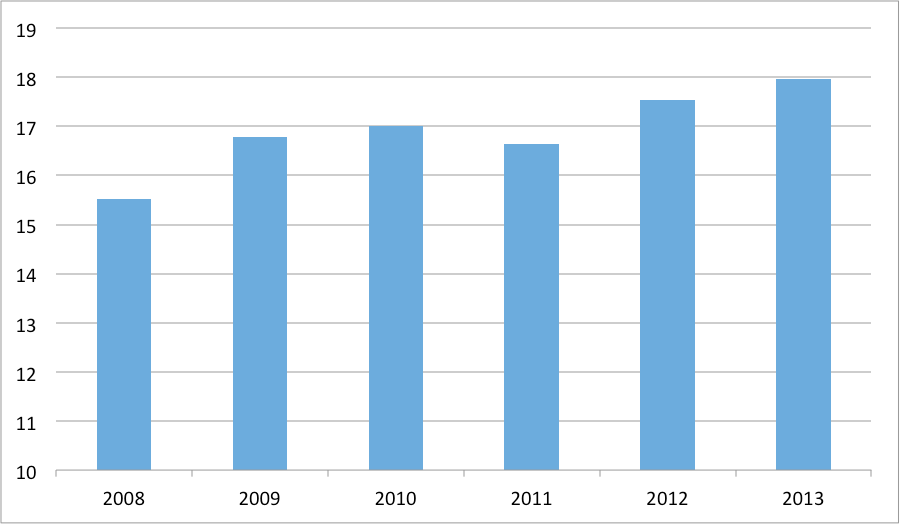Inclusion/Exclusion Criteria Show Minimal Rise
Few topics occasion the lamentations of clinical trial professionals more than the topic of patient inclusion/exclusion criteria in clinical protocols.
Few topics occasion the lamentations of clinical trial professionals more than the topic of patient inclusion/exclusion criteria in clinical protocols. Presentations and publications have pointed to dramatic increases in the number of these criteria. The data sources for these claims have often been proprietary databases, sometimes associated with commercial firms offering products and services to identify and reduce the number of criteria. ClinicalTrials.gov represents an important public data source to establish base line numbers of inclusion/exclusion criteria. A review of these publically available data shows that there is a small increase in the number of commercially funded Phase III inclusion/exclusion criteria, but nowhere as dramatic as is sometimes portrayed in industry press and industry conferences.
ClinicalTrials.gov is a federal database, mandated since 2007 for all organizations conducting studies under FDA auspices. Over time the number of mandated variables has increased. Missing data for any of the variables is often close to zero, and rarely exceeds 3%. Although companies almost always enter fairly extensive information, there is no way of knowing for certain that all inclusion/exclusion criteria have been included. For example companies may simply just stop entering criteria after a self-determined number. However, this seems unlikely since the criteria counts followed a near perfect negative binomial distribution.
Every year there is a statistically significant 0.41 increase in inclusion/exclusion criteria counts in commercially funded Phase III studies. Although the increase is not large, the mere size of the database itself helps to make that even mild changes statistically significant. Two MedDRA therapeutic areas, renal and urinary disorders as well as gastrointestinal disorders, differ statistically significantly from the overall trend, evincing slight declines in the total number of criteria.
Average Number of Inclusion/Exclusion
Criteria per Study by Year

Source: Department of Health Policy and Public Policy, University of the Sciences, Philadelphia, PA
Unifying Industry to Better Understand GCP Guidance
May 7th 2025In this episode of the Applied Clinical Trials Podcast, David Nickerson, head of clinical quality management at EMD Serono; and Arlene Lee, director of product management, data quality & risk management solutions at Medidata, discuss the newest ICH E6(R3) GCP guidelines as well as how TransCelerate and ACRO have partnered to help stakeholders better acclimate to these guidelines.
Phase III PROMINENT Trial Initiated to Evaluate Felzartamab for Primary Membranous Nephropathy
June 30th 2025The global Phase III PROMINENT trial has begun dosing patients to evaluate felzartamab in treating primary membranous nephropathy, a serious autoimmune kidney disorder with no FDA-approved therapies.
Funding Cuts Threaten Diversity in Clinical Research
June 27th 2025In this video interview, Kyle McAllister, co-founder, CEO, Trially, discusses how recent federal funding cuts are likely to undermine research focused on underrepresented populations, and why long-term investment in community-based studies is essential to closing persistent health equity gaps.